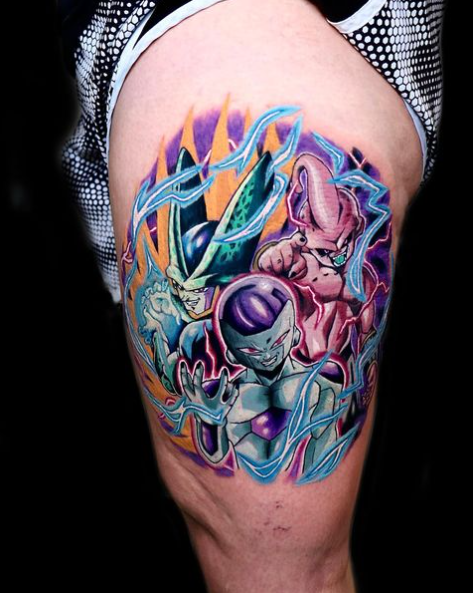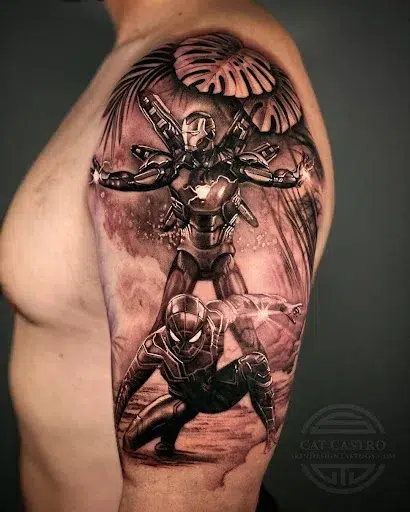For many people, a tattoo is a mark of pride. It can be a lasting reminder of a special occasion, or a way to express oneself. But when a tattoo gets infected, it becomes a painful reminder of something they would rather forget.
While getting a tattoo comes with the risk of infection, it’s a risk that most people are willing to take. A 2016 study found out that around 0.5% to 6% of people who get tattoos experience infectious complications. That’s why it’s crucial to be aware of the signs of infection, so you can get them treated as soon as possible.
Are Tattoo Infections Common?
Tattooing, just like any form of body modification, is associated with the risk of infection. It can range from a simple itchy tattoo to a severe case of bacterial or fungal infection. The likelihood of getting an infected tattoo is relatively low, but it’s important to bear in mind that the consequences of a tattoo infection can be severe.
Who Is at Risk for It?
People with poor hygiene, immune system issues, and a history of skin infections are at a higher risk of getting an infected tattoo. There are many reasons why this might happen but one of the major risk factors is a tattoo artist who doesn’t follow a standard procedure when it comes to tattooing. Some tattoo artists use unsterile needles and tattoo machines, which can lead to contamination and infection.
How Do You Know if Your Tattoo is Infected?
If it’s your first time getting inked, it’s important to be aware of the signs and symptoms of tattoo infection, so you can get it treated as soon as possible.
Visual signs of an infected tattoo start with skin redness, followed by swelling and pus. The skin around the tattoo may also feel tender and turn greenish or yellowish in color. Small bumps and red lesions may also appear around the outline of the tattoo if it’s infected.
What Are The Signs Of An Infected Tattoo?
There are some telltale signs that you have an infected tattoo. Some of the most common symptoms include itchiness, redness, swelling, as well as fever. It’s also possible that you may notice a foul odor, accompanied by pus and/or liquid discharge.
Infected Tattoo Stages
In general, there are three infected tattoo stages that you should be aware of: early, moderate, and severe.
- During the early stage of the infection, you may notice slight swelling and redness on the tattooed area. These symptoms are quite common and pretty normal, so it’s a little bit difficult to identify them as a sign of a tattoo infection. Generally speaking, a tattoo heals in about 2-4 weeks, so if you notice that your symptoms are getting worse, it’s best to see a dermatologist as soon as possible.
- The moderate stage is when the infection starts to spread and get worse. This stage can be accompanied by a rash or fever, and you may even notice a significant amount of pus in the affected area. Don’t wait for this stage to happen, because the longer you wait, the more painful and difficult it will be to treat an infected tattoo.
- The severe stage of the infection is when you already have a raw, open wound. This stage is very dangerous because it can lead to sepsis and even death. An infected peeling tattoo is also very painful, and it can lead to permanent scarring, so don’t ever delay your treatment.
Types of Tattoo Infections and Reactions
Ink is made up of different compounds and substances, which is why it’s important to understand the risks associated with tattooing. The most common types of tattoo infections and reactions include:
- Abrasions
This is a very common tattoo reaction. It’s caused by the skin rubbing against the tattoo needle, and it usually happens during the tattooing process. This type of infection is quite common, and the healing process starts in just a couple of days.
- Bacterial and Fungal Infection
Bacterial and fungal infections are typically caused by poor hygiene and improper tattooing practices. Various species of bacteria such as Staphylococcus and Streptococcus are some of the main causes of an infected peeling tattoo.
- Pigment Tattoo Infection
Some people are allergic to the pigment used in tattoo ink, which is why they develop rashes and other allergic reactions. This is the reason why it’s important to get a tattoo consultation before getting a tattoo, so you can ask questions like “What is tattoo ink made of?” or “How to prepare your skin for a tattoo?”
- Keloids
A keloid is a type of scar that’s characterized by a hard, raised, bumpy skin. This type of reaction is quite rare after getting a tattoo, but it’s not impossible. If you are aware that your skin is prone to keloids, it is best to consult a dermatologist before getting a tattoo.
How Do You Treat an Infected Tattoo?
It’s not recommended to try to treat an infected tattoo on your own, because it can cause permanent damage to your skin. You should consult a dermatologist as soon as possible if you notice any signs of an infection, such as redness, swelling, itching, and pus. Treatment for an infected tattoo depends on the severity of the infection. It can include topical medications, antibiotics, or surgical removal.
How Long Does It Take to Heal?
There’s no clear-cut answer to this question because it depends on the severity of the infection. The healing process can vary from a couple of weeks to a few months, so it is best to treat the infection as soon as the first onset of symptoms appears.
Can an Infected Tattoo Heal on Its Own?
While the body has a natural healing mechanism, an infected tattoo is a very serious condition that can lead to life-threatening complications. Furthermore, it can also cause permanent scarring and disfigurement. So, if you notice that your tattoo is getting worse, you should consult a dermatologist as soon as possible.
Will a Tattoo Infection Ruin the Tattoo?
If you want to save your tattoo, it’s best to consult a dermatologist as soon as you notice any signs of an infection. The longer you wait, the more likely it is that your new tattoo will be ruined.
How to Prevent Tattoo Infection?
The best way to prevent a tattoo infection is to practice good tattooing hygiene. This includes using the correct type of needles, using the right amount of tattoo ink, and making sure that your skin is properly prepared before the tattooing process. Getting a tattoo should not be taken lightly because there are a lot of health risks associated with improper and unhygienic tattooing practices.
If you are looking for a reputable tattoo parlor that gives utmost importance to the health and safety of its clients, you should visit one of our tattoo shops in Las Vegas, Hawaii, New York, and California.
The Bottom Line
- The old adage, that cheap tattoos are no good and good tattoos aren’t cheap is true.
- The sterility of a tattoo shop is the most important factor when choosing a tattoo shop.
- When visiting a tattoo shop don’t be afraid to ask to see what common safety practices they use to keep their equipment sterile. If they can’t show you, then leave.











